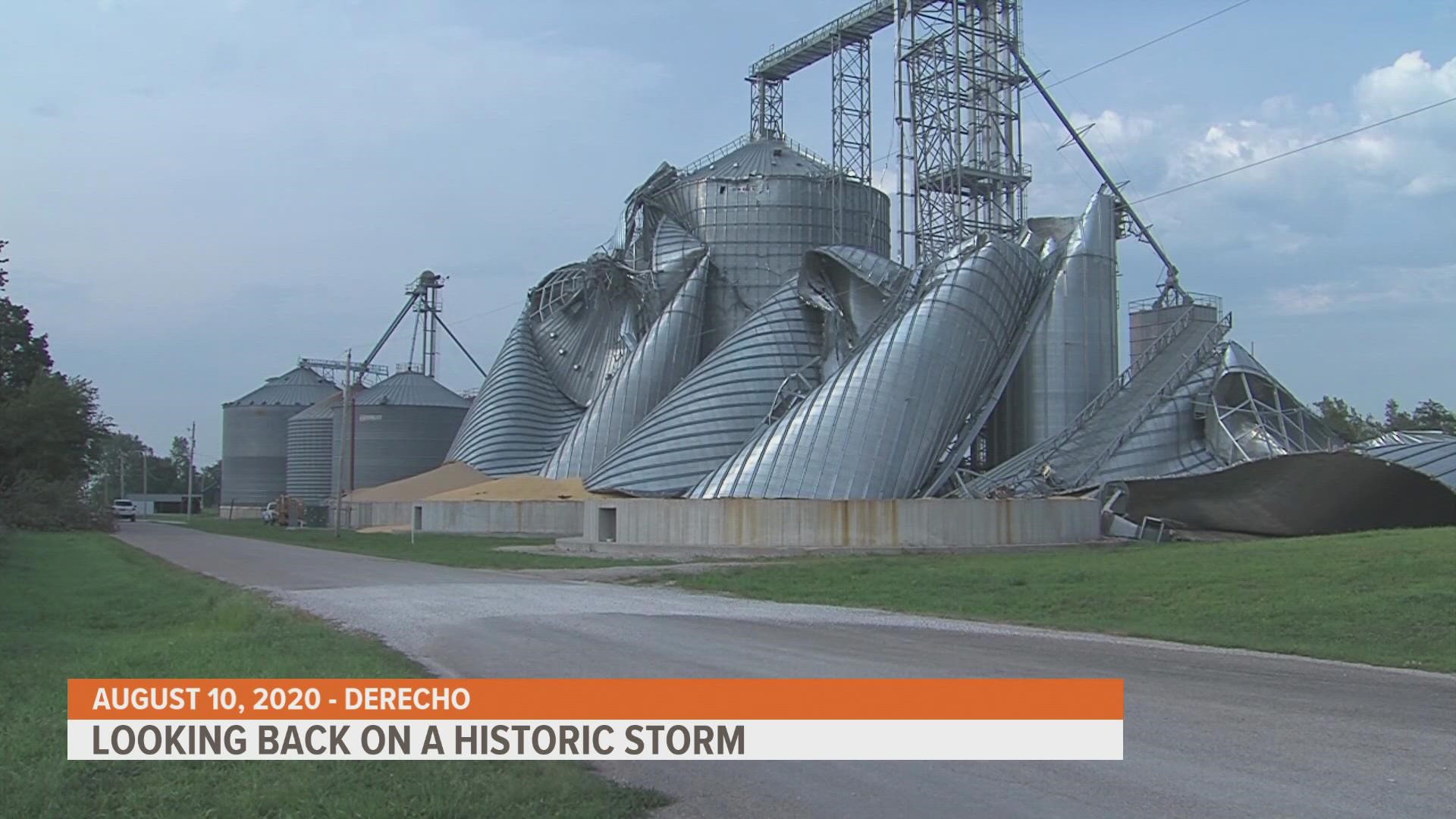SHELDAHL, Iowa — Kenny Lund is just one of Iowa's hundreds of farmers who vividly remember Aug. 10, 2020: the day a historic long-lived wind storm, known as a derecho, tore across the state.
Lund has been an Iowa farmer for 44 years, and says he's never seen a storm with such intensity move across his land, which sits just a few miles south of Sheldahl.
"It was tough," Lund recalled. "Just because of what you lost. And you'd worked to get to that point, and now you're going to have to do it all over again."
After the storm, Lund was forced to abandon 275 acres of crop, making for a slow and tedious harvest season.
The derecho started as a small, overnight cluster of decaying thunderstorms in South Dakota.
Once the storms reached Iowa, however, they exploded thanks to an extremely favorable environment for strong to severe storms.
The storms formed a line and raced across the state from west to east, often producing wind gusts over 100 miles per hour.
Cedar Rapids, Iowa recorded a wind gust of about 140 miles per hour and sustained significant damage as a result of the storm.
The derecho was so severe, it became known as the costliest thunderstorm disaster in U.S. history.
Derechos aren't new to Iowa, despite the strength of August 2020.
Eleven have occurred in the state over the last 30 to 40 years.
Iowa's state climatologist, Dr. Justin Glisan, says "projections show the environment in which severe thunderstorms can form will actually increase on a daily basis" in the future.
Put simply: there will be more frequent thunderstorm days, with a higher probability of those days producing severe storms.
This is a concerning trend for Iowa's agriculture sector, as farmers are already regularly burdened with droughts, floods, hail storms, heat waves and cold snaps.
More extremes means more challenges.
Iowa's Secretary of Agriculture, Mike Naig, says the state's Department of Agriculture & Land Stewardship is constantly evaluating best practices, procedures, and technologies for farmers.
He believes farmers will have to repeatedly assess their crop management moving forward in order to ensure they are well equipped to deal with the increasing number of extreme weather events.
Thankfully, a year later, many farmers in Iowa are back on their feet.
Many of them received help from the state and federal government, but the majority felt the most relief thanks to insurance.
"Insurance never makes you whole, but it does allow you to have a fighting chance of doing it again the following year," Naig said.
In some places, like farms in Sheldahl, volunteer corn still dots the landscape of the fields.
Still, farmers are back to their late summer routine as harvest nears in just a handful of weeks.
Lund's farm is mostly back to normal, despite some electrical wiring he still needs to have completed for his recently replaced grain bins.
Although the derecho forced some farmers to change directions in their management practices, Lund he has no intentions of altering much because this is the life he chose.
"It's a great life," he said. "It has it ups and downs, like anything."
WATCH: A closer look | What is a derecho? (Aug. 11, 2020)

